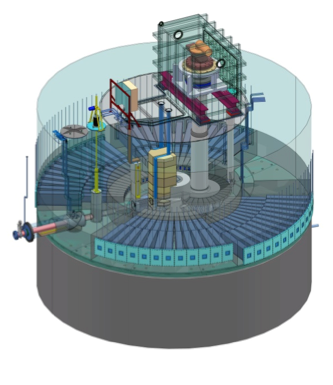QUASAR work part of UK contribution to ESS
The European Spallation Source (ESS) currently under construction in Lund, Sweden is a collaboration of some 17 countries to build the world’s most powerful research neutron source, with first neutrons planned for 2019.
On 20 October 2015 QUASAR Dr Mark Ibison, who is working on the optical diagnostics system for the Target Station, attended a review meeting in Lund with other members of the Design Team. It was essential to coordinate with the shielding designers to ensure that the preferred optical path does not compromise the radiation protection requirements. The optical system for viewing the proton beam window and the tungsten target will be built of assemblies of curved and plane mirrors, which are much more radiation-resistant than lenses. However, using mirrors presents particular challenges in defining a practicable optical path without excessive light losses, and in controlling the inevitable image imperfections or ‘aberrations’ which are introduced. Consideration must also be given to initial assembly and the need for future maintenance.

ESS Target Station (source: https://europeanspallationsource.se/target)
The other main topic of the meeting was the ongoing research to characterise luminescent coatings, to be used on surfaces which will be ‘lit up’ by the high-energy proton beam, so providing the photon source for diagnostic use.
The next phase of the work is to refine the optical design so that the dimensions of the Proton Beam Instrumentation Plug and its shielding, through which the optics will view the beam window and the target, can be finalised.